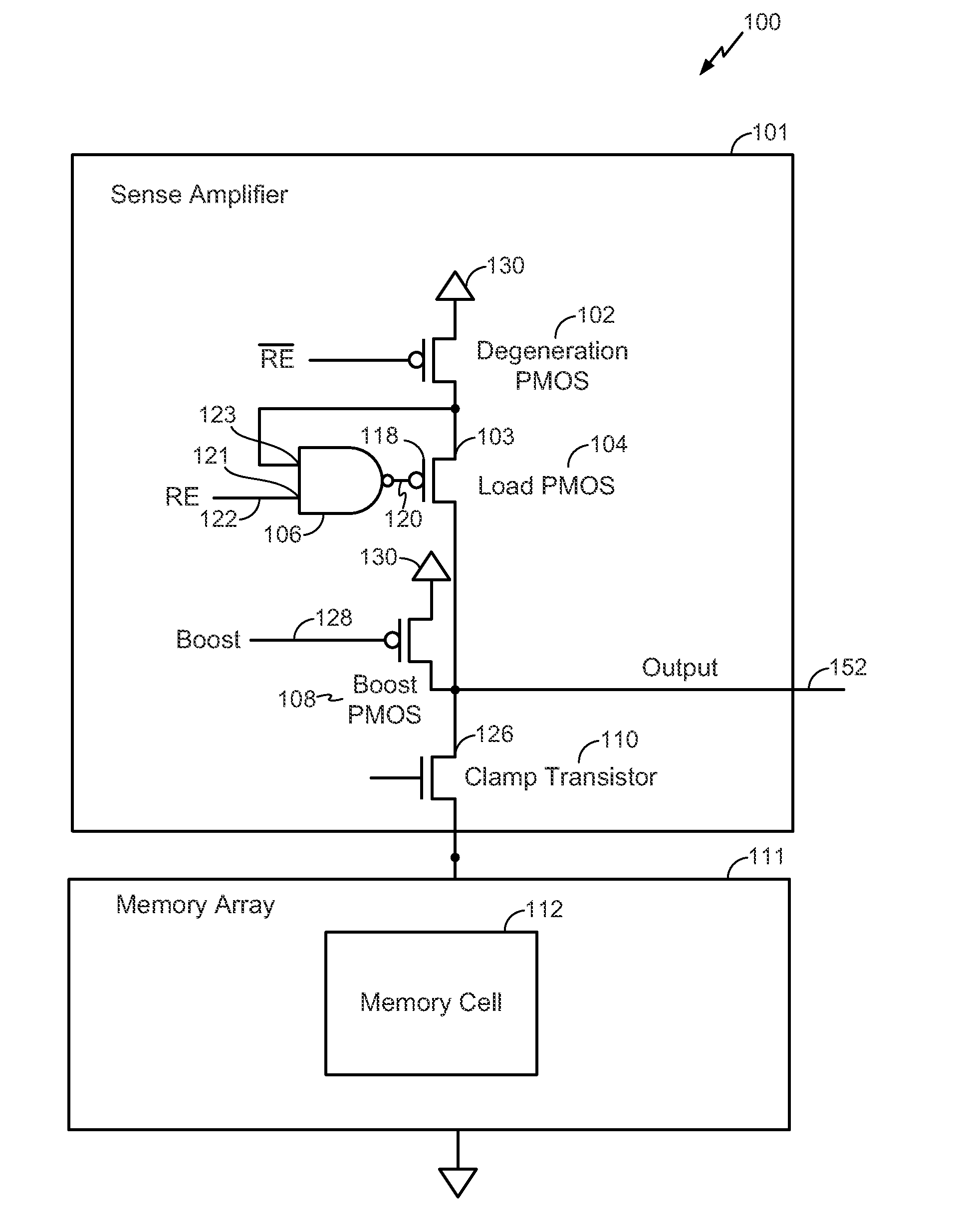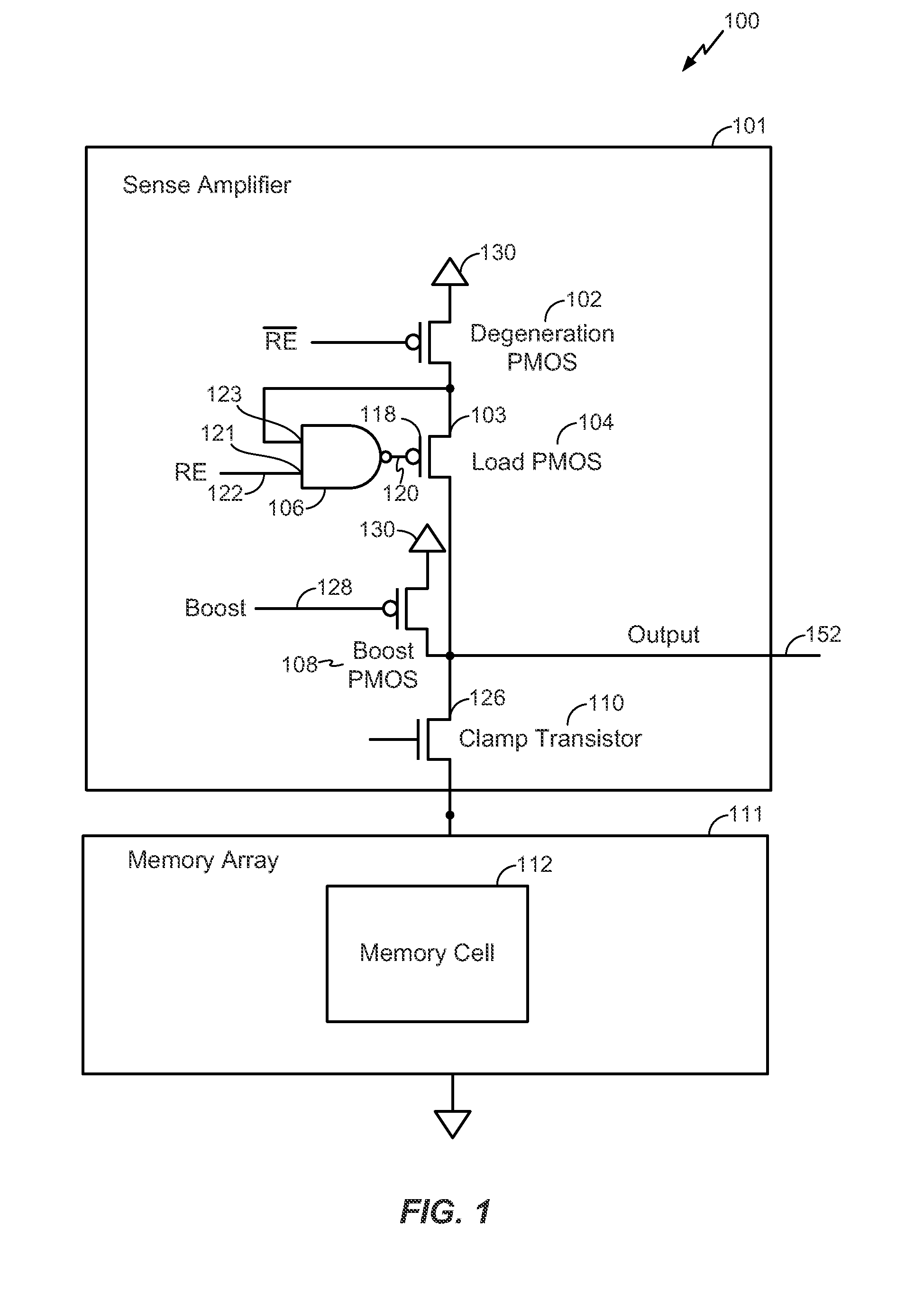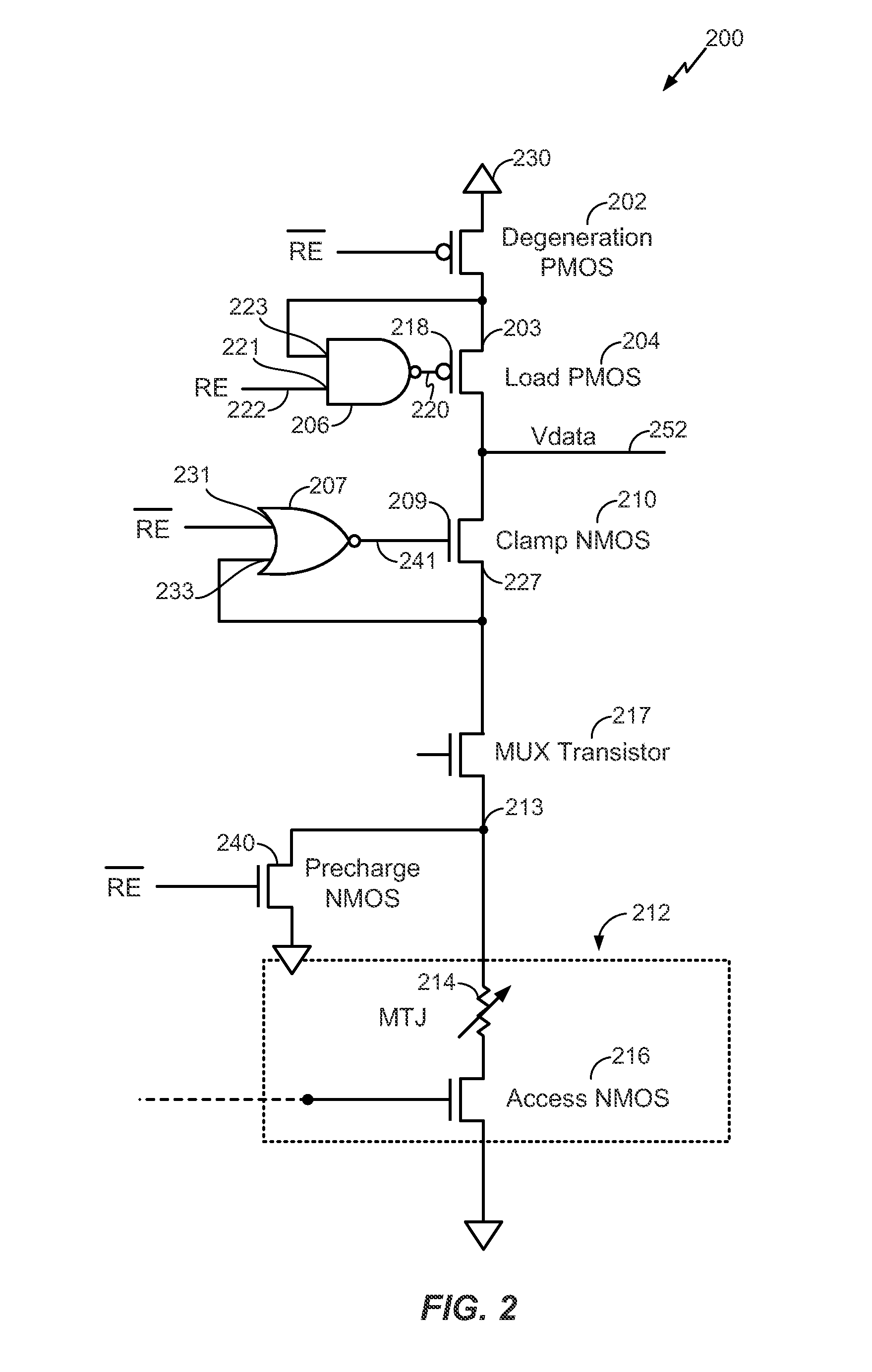Sensing circuit
a sensing circuit and circuit technology, applied in the field of sensing circuits, can solve the problems of increasing the difficulty of accurately reading data, and achieve the effects of increasing process variation tolerance, enhancing sensing margin, and increasing output resistan
- Summary
- Abstract
- Description
- Claims
- Application Information
AI Technical Summary
Benefits of technology
Problems solved by technology
Method used
Image
Examples
Embodiment Construction
[0016]Referring to FIG. 1, a diagram of a first illustrative embodiment of a sensing circuit is disclosed and generally designated 100. The sensing circuit 100 includes a sense amplifier 101 coupled to a memory array 111. The memory array 111 includes a plurality of memory cells such as an illustrated memory cell 112. The memory array 111 may be a magnetoresistive random access memory (MRAM), a phase-change random access memory (PRAM), or a spin torque transfer MRAM (STT-MRAM) as illustrative examples.
[0017]The sense amplifier 101 includes a degeneration PMOS transistor 102, a load PMOS transistor 104, a NAND circuit 106, a boost PMOS transistor 108, and a clamp transistor 110. The sense amplifier 101 further includes a power supply 130, and an output node 152.
[0018]A gate 118 of the load PMOS transistor 104 is controlled by an output 120 of the NAND circuit 106. The NAND circuit 106 includes a first input 121 responsive to a control signal 122 (labeled RE) and a second input 123 co...
PUM
 Login to View More
Login to View More Abstract
Description
Claims
Application Information
 Login to View More
Login to View More - R&D
- Intellectual Property
- Life Sciences
- Materials
- Tech Scout
- Unparalleled Data Quality
- Higher Quality Content
- 60% Fewer Hallucinations
Browse by: Latest US Patents, China's latest patents, Technical Efficacy Thesaurus, Application Domain, Technology Topic, Popular Technical Reports.
© 2025 PatSnap. All rights reserved.Legal|Privacy policy|Modern Slavery Act Transparency Statement|Sitemap|About US| Contact US: help@patsnap.com



